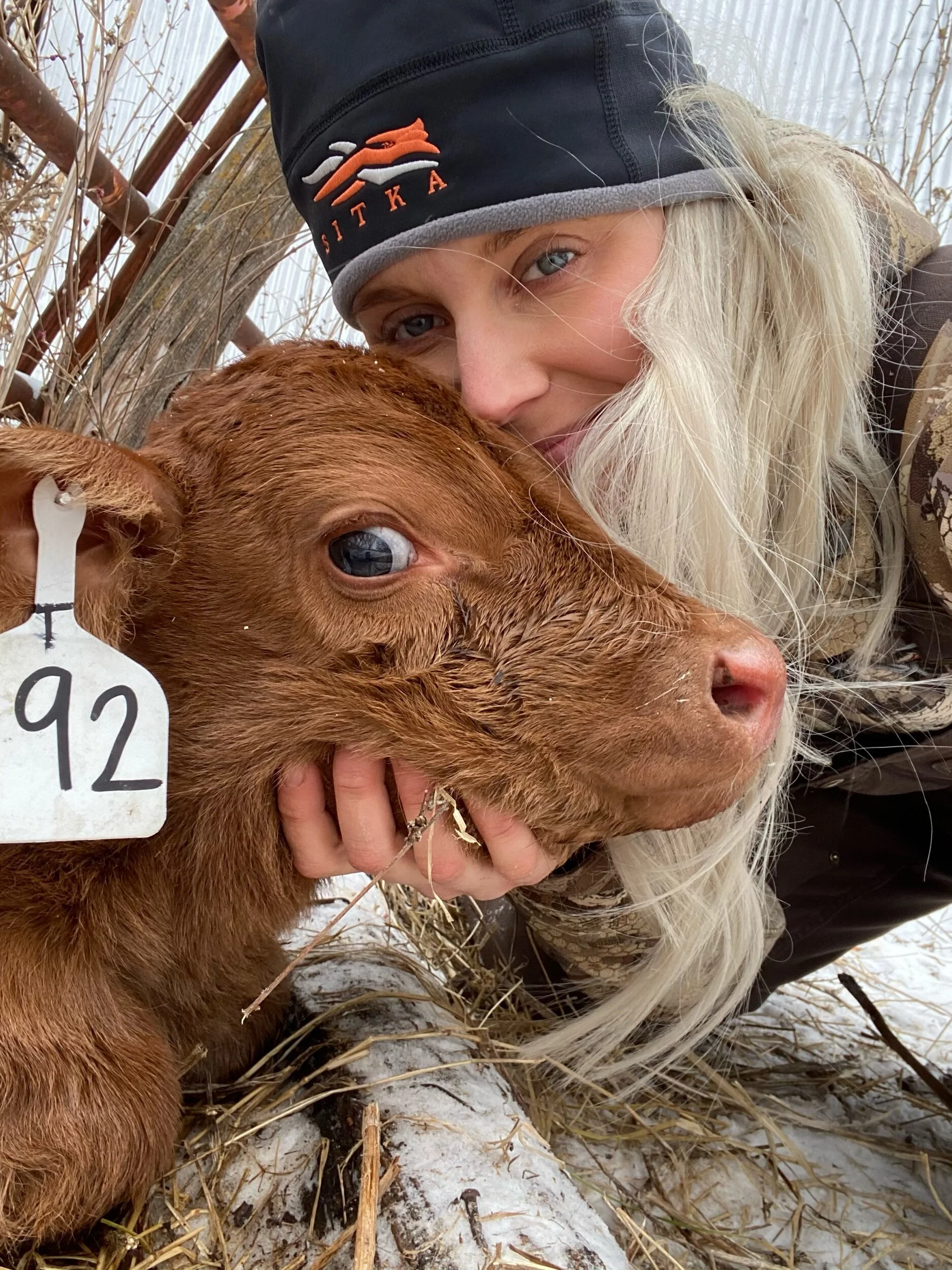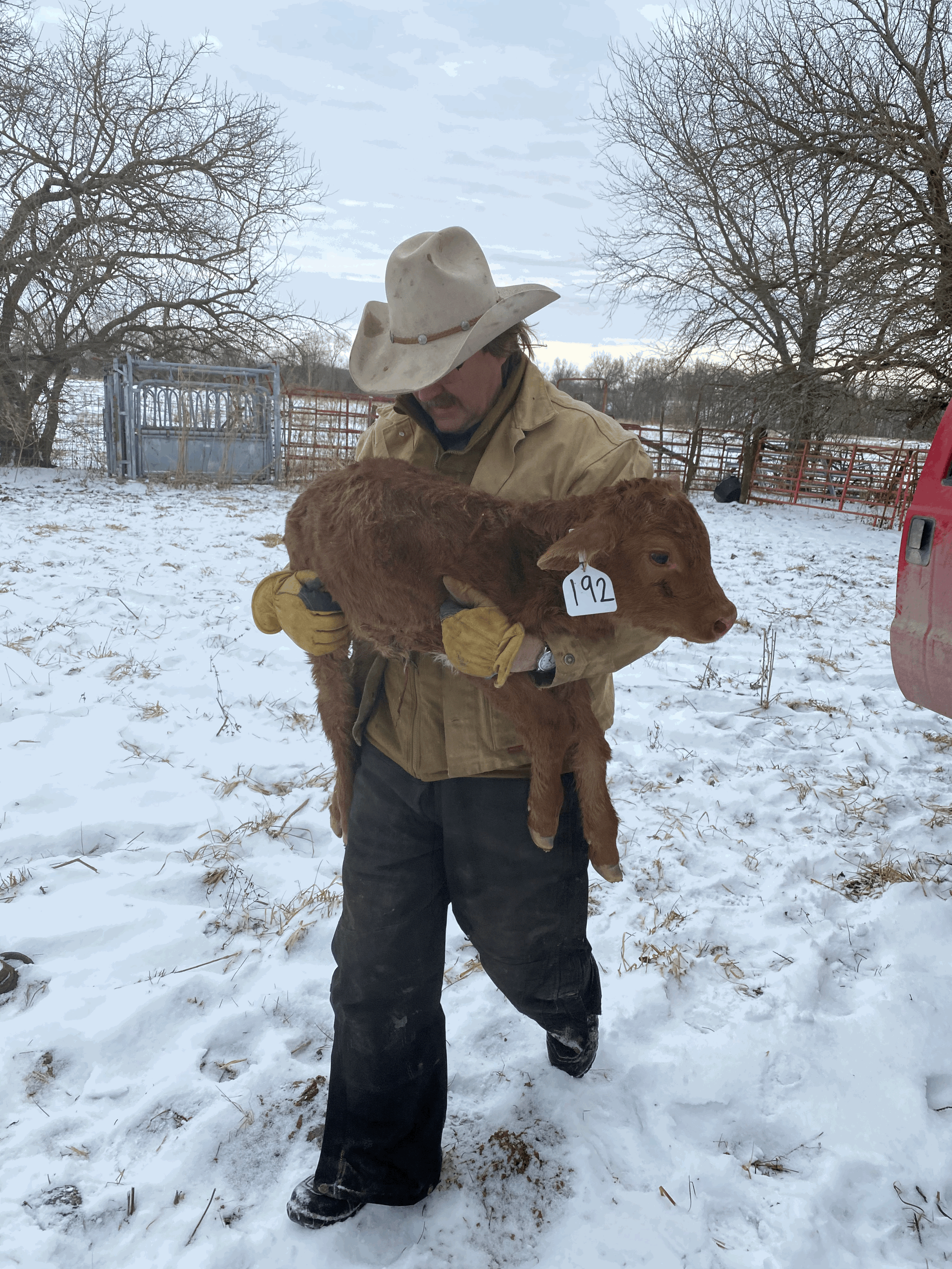February Calving
“If the weather is so bad, why are you calving right now?”
If you’ve been following along with my Instagram account, (and if you haven’t been…why the heck aren’t you) you’ve been seeing the grind that is the 2021 calving season. To make things even more interesting, we are calving out a group of heifers. Typically, heifers require more attention than mature cows, but regardless, this winter has proven to be a doozy. We are smack dab in one of the longest cold stretches we can remember. All across the midwest, ranchers are facing wildly cold temperatures and this creates a whole host of problems for calving. This time of year is referred to as “spring calving” but it dang sure doesn’t feel like spring to me!
I’ve talked about this on my IG account, but I have overwhelmingly gotten the question “If February is so bad, why are you calving right now?” Hundreds and hundreds of people have asked me this or made comments on us calving in February. I can’t disagree with them, at the moment. Hell, I wish we WEREN’T calving right now myself! But it’s not all that simple. I wanted to go over a few reason as to why are having baby cows at this time.
First off, I have to point out that we cannot predict the weather far enough in advance when making decisions on calving. In 2020, dad and I bred and sold about 300 heifers with a bull turn-in date of May 1 2020, giving them a February 7 2021 calving date. We also purchased heifers with this same calving window. It was almost a year ago we had to decide when to turn bulls in to pick our calving window. Had we known we were going to face this kind of weather, you can bet we would have made a different decision. My point in sharing this is that it’s a gamble. Our weather is so unpredictable and ever changing.
We’ve seen winters where all of the January and February weather is nice and calm and would have been awesome calving weather. For example, in 2017, Dad and I calved out 300 heifers (just the two of us) and had a 96% survival rate in our calf crop. To this day, we still talk about how much we enjoyed calving all of them out that year. For the most part, the weather was awesome almost the entire time.
In other years, we’ve calved out cows in March/April and faced snow, freezing rain, and so much mud that we would have given anything to have already been done calving. In my opinion, the WORST weather for calving is most likely to happen during March/April here. The calves can’t get dry and that makes for a bad combo. There’s been times calving during those months we would have given anything to have calved in February. We actually have a big group of cows that we’ll be calving out in March and April of this year, so I can only pray mother nature cooperates.
You catch my drift here? We never know what mother nature is going to throw at us. All we can do is work hard in the conditions that are thrown our way!
Third, we try to work around the weather for what we believe is the best breeding season. Where we live in Missouri, almost all of the grass is fescue. While fescue has several benefits, there is a major drawback we face when grazing it. There is no cure for what happens, and it’s basically the only grass we have, so all we can do is work around it the best we can.
Fescue can restrict blood flow in cattle and this can affect them in both the heat and the cold that we experience here. During the winter, restricted blood flow to the extremities can result in infected and sore feet. This is known as “fescue foot”. During the hot summer months, the lack of blood flow in some animals makes it hard for them to regulate their body temperature. As they have trouble cooling themselves down, this can bring on heat stress. However, not ALL cattle are affected by fescue. It affects some worse than others!
So how does this affect breeding season and calving in February? Say we wanted a March 15 calving date, so we’d turn bulls in July 6th. July and August are our hottest months. We now know a little bit about how our native grasses can affect cattle during the summer, and in addition to that, getting bulls to travel around and breed all of our cattle during the extreme heat is hard. It’s not impossible, but they’d rather lay under a shade tree rather than go check cows for a heat cycle. (Can’t say I blame them..it gets miserable out there.) This takes us to having adequate bull numbers in our herds, but that’s a topic for another blog post. The heat can also affect whether or not the cattle successfully breed and if the pregnancy sticks. Keeping our cattle in good shape year-round also comes into play here!
Lastly, we like to be done with calving before planting season begins so we can focus our efforts on getting seed in the ground on the row-crop side of our operation. Planting corn can begin as early as April. Another reason to calve this time of year.
Having said all of this, I want to make it clear that there is no right or wrong time to calve. It’s important that every producer figures out what works best for their own operation. While most of our cows are spring calvers, we also have some fall calving cows every year. I hope this has answered some questions behind our management decisions. We definitely don’t know everything, and I definitely never want to paint the picture that we do. All I can do is share what we do and answer questions about our operation. I encourage every livestock owner to conduct their own research and speak to respected producers in their areas for more insight on what might work best for them.
We are constantly analyzing our decisions and trying to learn from times like these. Dad and I have already discussed that when it comes time to turn bulls in, we will probably be a little gun-shy from the winter of 2021. In the meantime, we’ll keep grinding and working hard to care for our cattle to the best of our abilities!








